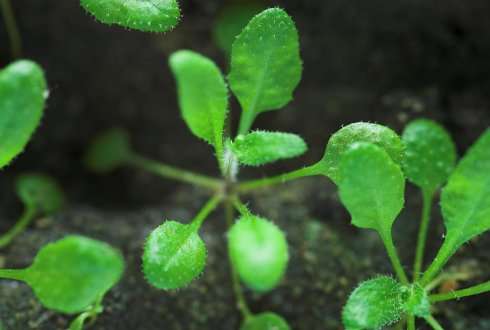How a little plant became a model for pioneering research

In recent decades, research into a diminutive plant, Arabidopsis thalania, which goes through daily life as a common weed, has generated a tremendous amount of knowledge. Much of the research on Arabidopsis, which has meanwhile become the most important model for plant genetic research, has been conducted in Wageningen, where this type of research began in 1962. During his career, Professor Maarten Koornneef made a substantial contribution to this field of study. On Thursday 11 April he will retire from his personal chair in Genetics at Wageningen University, part of Wageningen UR.
The genetic research into Arabidopsis, a plant which has no economic value in itself, has resulted in enormous progress in many areas of plant science, says Koornneef in his farewell address Arabidopsis in Wageningen. In particular, this research has unravelled the molecular and biochemical mechanisms that play a role in processes such as flowering and the development of organs such as embryos, seeds and roots, as well as how plants make useful substances. The knowledge that is acquired in this research can often be applied to other plant species, including crops.
A good example of the benefits of genetic research in Arabidopsis, and later in rice, is the discovery of the flowering hormone florigen. Scientists had been searching for this plant protein, which functions as a general growth hormone, for many years. It is created by the plant in the leaves and transported to the locations where flowers form. The small protein is coded by the FT gene; the mutant of this gene was first isolated and studied in Wageningen many years ago.
According to Koornneef, Arabidopsis became the primary model for plant genetic research due to the efficiency with which research can be conducted on this species: it has a short, non-seasonal generation time – only two months between one generation of Arabidopsis and the next (for species such as tulips, the generation time is six to seven years), the plant takes up very little space, the genome is small (the entire DNA sequence was determined in 2000) and genes are easily transferred to Arabidopsis itself as well as to other species. As a result, Arabidopsis now holds a similar role the world of plant genetics as the fruit fly (Drosophila) in insect genetics.
Fundamental research
According to Koornneef, the beneficial research climate in Wageningen is the basis for the success of Arabidopsis research. This research climate is characterised by the presence of a broad spectrum of expertise and the willingness to collaborate. Koornneef: "An important lesson from this success is that fundamental research, driven by curiosity, is also important for applied research, and that multidisciplinary research, where you look beyond the borders of your own discipline, can be very productive."
Professor Maarten Koornneef (De Lier, 1950) is currently one of the four directors of the Max Planck Institute for Plant Breeding Research in Cologne (Germany). In 1992 he was appointed to a personal chair in Genetics at Wageningen University, a position he has held part-time since 2004, when he began working in Cologne. Moreover, he is honorary professor at the Botanical Institute of the University of Cologne. In addition, Koornneef is a member of the Royal Netherlands Academy of Arts and Sciences (KNAW), the Academia Europaea, and a foreign member of the National Academy of Science of the USA, an honour that has been granted to only a few Dutch scientists. Koornneef has authored a large number of frequently cited publications. He is seen by his colleagues as a world authority in Arabidopsis research.
Provided by Wageningen University



















